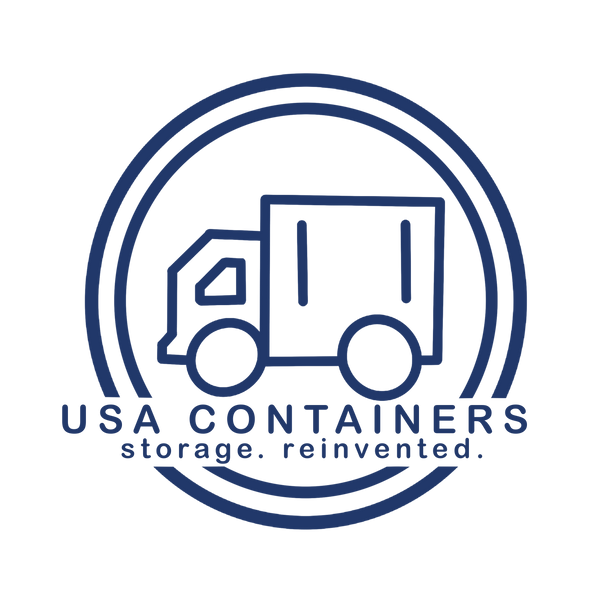
How Shipping Containers are Certified for Overseas Transport
Share
If you’re planning to ship goods overseas in a used shipping container, there’s one crucial step that can’t be skipped: getting it inspected and certified as seaworthy. A seaworthy certificate, also known as a CSC inspection (Convention for Safe Containers), confirms that your container is safe, secure, and suitable for international transport.
If you’re buying a container specifically for international shipping, make sure to let your seller know upfront. Reputable companies like USA Containers can ensure your unit is pre-inspected, certified, and ready to go—saving you time and hassle. Buying from a trusted source also means you're getting a container built to the standards required for global shipping.
Here’s a detailed look at what inspectors check, how to prepare, and what to expect during the certification process.
What Is a Seaworthy Certificate?
A seaworthy certificate confirms that a shipping container meets the structural standards required to transport cargo safely over water. This certification follows international guidelines laid out by the International Maritime Organization (IMO) under the CSC treaty. Without it, most major shipping lines won’t allow your container to be loaded onto a vessel.
The certification is typically good for a set period unless the container sustains damage or shows signs of excessive wear. After that, the container must pass another inspection or be re-certified with what's known as an ACEP (Approved Continuous Examination Program) sticker.
What Inspectors Look For
Inspectors follow a checklist that covers the container’s structural integrity, security features, and overall condition. Here’s what they examine closely:
1. Exterior and Structural Frame
The first thing an inspector checks is the frame of the container. This includes the corner posts, top and bottom rails, and cross members. All of these must be free from cracks, buckling, or heavy corrosion. Even minor dents are evaluated to ensure they don’t affect the container’s ability to stack or bear weight safely.
2. Doors and Seals
The doors must open and close properly and lock securely. The locking rods, hinges, and handles are tested for smooth operation and corrosion resistance. Rubber door seals are inspected to make sure they’re intact and can prevent water from entering. Any torn or brittle gaskets usually lead to a failed inspection.
3. Roof and Side Panels
Surface rust is common on used containers, but excessive rust, punctures, or holes in the roof or walls will be flagged. Inspectors look for areas that could allow water, pests, or air to leak in or out. Warped or bulging panels can also raise red flags, especially if they indicate previous structural damage.
4. Flooring
Most shipping container floors are made of marine-grade plywood set into steel cross members. Inspectors check for rot, warping, missing bolts, or soft spots. Any oil stains, moisture damage, or signs of insect activity can compromise the seaworthy status. A solid, dry, and level floor is essential for cargo stability during transit.
5. Interior Condition
The inside of the container is inspected for cleanliness and integrity. Any protruding nails, splintered wood, or mold can result in a failed inspection. The interior walls should be free from holes and the floor should be smooth and secure.
6. CSC Plate
Every container built for international shipping comes with a metal CSC plate—usually mounted on the left door. This plate includes key data such as the container’s age, manufacturer, max gross weight, and stacking capabilities. The inspector checks that this plate is present and legible. If it’s missing or unreadable, the container won’t pass.
What is a CSC Container Plate?
While not always mandatory for the certificate itself, some inspectors also check additional safety or performance-related features:
-
Ventilation: Standard containers come with vents, but they need to be open and unobstructed.
-
Pest Control: If you’re shipping to or from a country with strict biosecurity laws (like Australia or New Zealand), your container may need fumigation or pest inspection clearance.
-
Paint Condition: Though cosmetic, peeling paint may be flagged if it indicates deeper corrosion issues underneath.
New (one-trip) containers typically come with a valid CSC plate already attached, meaning they’re pre-certified for international shipping. Since these containers have only made a single cargo trip from the manufacturer, they meet all structural and safety standards right out of the gate—saving you the time and cost of a separate inspection.
Getting a seaworthy certificate isn’t just a formality—it’s a necessary step that ensures your container is safe and compliant for overseas transport. Whether you’re shipping personal belongings, commercial goods, or equipment, passing inspection means your cargo is protected from damage, delays, and regulatory issues.
Fill out the form below for a free shipping container quote from USA Containers:
